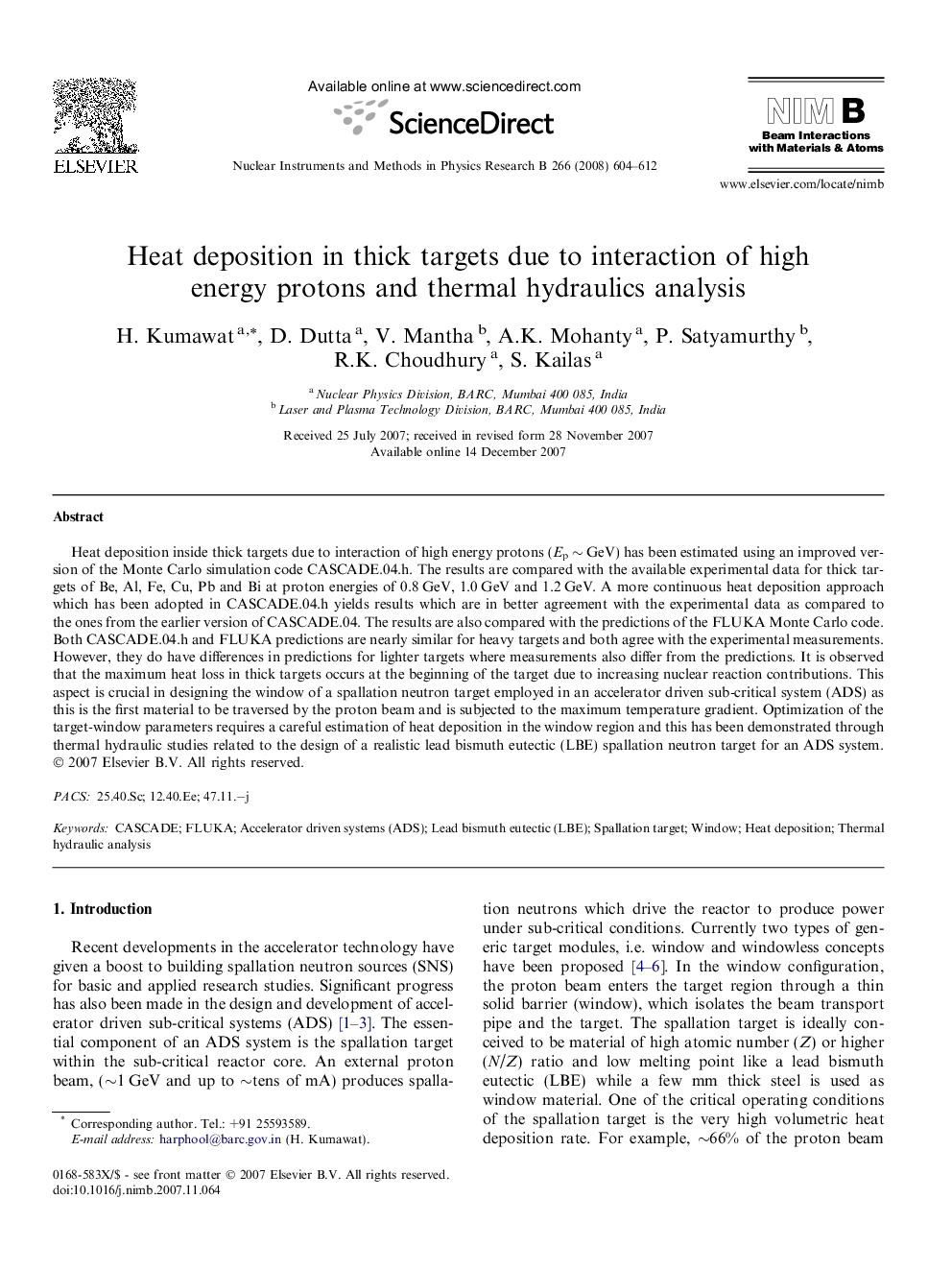| Article ID | Journal | Published Year | Pages | File Type |
|---|---|---|---|---|
| 1686160 | Nuclear Instruments and Methods in Physics Research Section B: Beam Interactions with Materials and Atoms | 2008 | 9 Pages |
Heat deposition inside thick targets due to interaction of high energy protons (Ep ∼ GeV) has been estimated using an improved version of the Monte Carlo simulation code CASCADE.04.h. The results are compared with the available experimental data for thick targets of Be, Al, Fe, Cu, Pb and Bi at proton energies of 0.8 GeV, 1.0 GeV and 1.2 GeV. A more continuous heat deposition approach which has been adopted in CASCADE.04.h yields results which are in better agreement with the experimental data as compared to the ones from the earlier version of CASCADE.04. The results are also compared with the predictions of the FLUKA Monte Carlo code. Both CASCADE.04.h and FLUKA predictions are nearly similar for heavy targets and both agree with the experimental measurements. However, they do have differences in predictions for lighter targets where measurements also differ from the predictions. It is observed that the maximum heat loss in thick targets occurs at the beginning of the target due to increasing nuclear reaction contributions. This aspect is crucial in designing the window of a spallation neutron target employed in an accelerator driven sub-critical system (ADS) as this is the first material to be traversed by the proton beam and is subjected to the maximum temperature gradient. Optimization of the target-window parameters requires a careful estimation of heat deposition in the window region and this has been demonstrated through thermal hydraulic studies related to the design of a realistic lead bismuth eutectic (LBE) spallation neutron target for an ADS system.
